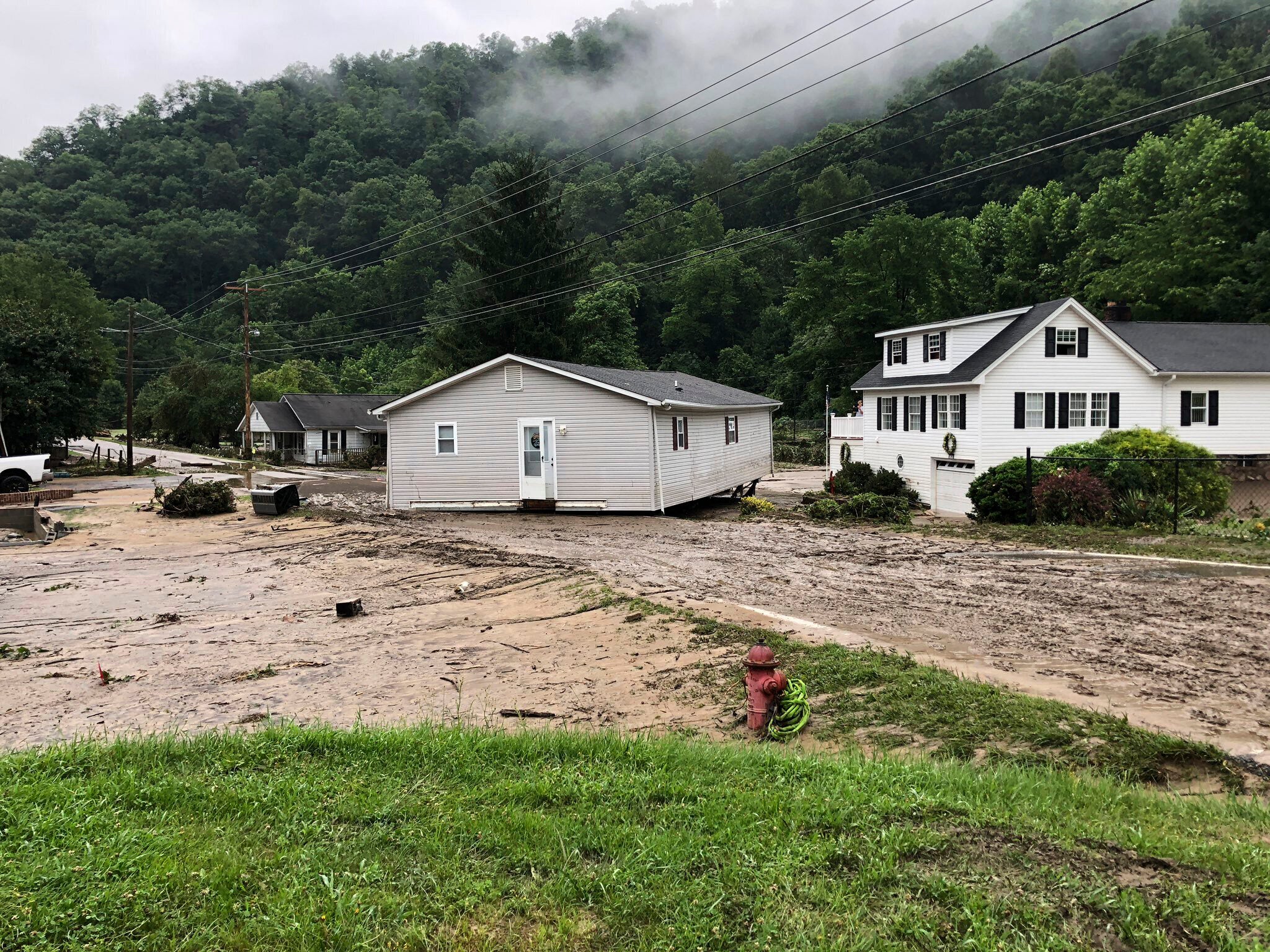No deaths, 100 homes damaged in aftermath of heavy flooding in Virginia
A state of emergency was declared in Buchanan County after floods cause widespread damage
More than 100 houses were damaged in floodwaters from torrential rains that swept through rural Buchanan county in southwestern Virginia on Wednesday.
At one point, more than 40 people were unaccounted for, as power outages, road closures and a lack of cell service hampered communication in this rural part of the Appalachian Mountains.
But by Thursday afternoon, every missing person had been accounted for, and no deaths had been reported, the sheriff’s office said during a press conference.
Water levels rose in the community after a continuous downpour from Tuesday carried on to Wednesday morning.
Around 18 search-and-rescue teams had been dispatched in and around Whitewood, Buchanan County Chief Deputy Eric Breeding said in a briefing.
Virginia Governor Glenn Younkin declared a state of emergency on Wednesday in response to the severe flooding in the area.
“We are deeply saddened to learn that another flood has impacted a community still recovering from last year’s flood,” Mr Youngkin said in a statement.
“In the wake of this devastation, I want Virginians in Buchanan County to know that we are making every resource available to help those impacted by this storm.”

Numerous roads and bridges were washed out by mudslides and rising water levels, a Virginia state emergency management official said in the briefing, adding there was no power or landline and cellphone services in the affected area.
Floodwater swept the riverfront Appalachian community as incessant torrential rainfall lashed the area with multiple thunderstorms.
The National Weather Service issued a flash-flood warning on Tuesday night and it remained in effect until Wednesday morning for Tazewell county, which borders Buchanan. It warned that five inches of rainfall could flood small creeks, streams and low-lying areas.
AccuWeather has reported that radar indicates six inches of rain may have fallen in the area.
Hundreds of houses suffered power cuts on Wednesday in Buchanan after the deluge, according to PowerOutage.US, a project that tracks, records and aggregates live power outage data from utilities across the country.
Downpours blamed for the flooding were part of a larger storm system that struck the mid-Atlantic region on Tuesday night and triggered powerful thunderstorms in the Washington-Baltimore region. Parts of nearby Tennessee also witnessed heavy rainstorms.
“We ask that everyone please pray for this area,” Mr Breeding said. “Please pray for those affected by this flooding.”
The county has suffered its second flooding in less than a year, after 50 people were rescued and one died in September last year from the remnants of Hurricane Ida that swept through the region.
Flash floods like this could also become more common in parts of the country as the climate crisis grows. One recent study noted that as the planet warms, storms may be liable to dump more and more rain over an area in a short period of time.
With that deluge, the landscape – especially in low-lying areas, valleys and asphalt-covered cities – could be liable to fill up with water in dangerously quick fashion.
Areas hit hardest by this week’s floods lay along a river in low areas between the mountains. A report last year from the non-profit First Street Foundation found that Buchanan County had an “extreme risk” of flooding over the next 30 years.
The climate crisis has already likely lead to worsening floods in many parts of the world – both along the coasts and further inland, according to the most recent report from the Intergovernmental Panel on Climate Change (IPCC), a leading authority on climate science.
Join our commenting forum
Join thought-provoking conversations, follow other Independent readers and see their replies
Comments


Bookmark popover
Removed from bookmarks